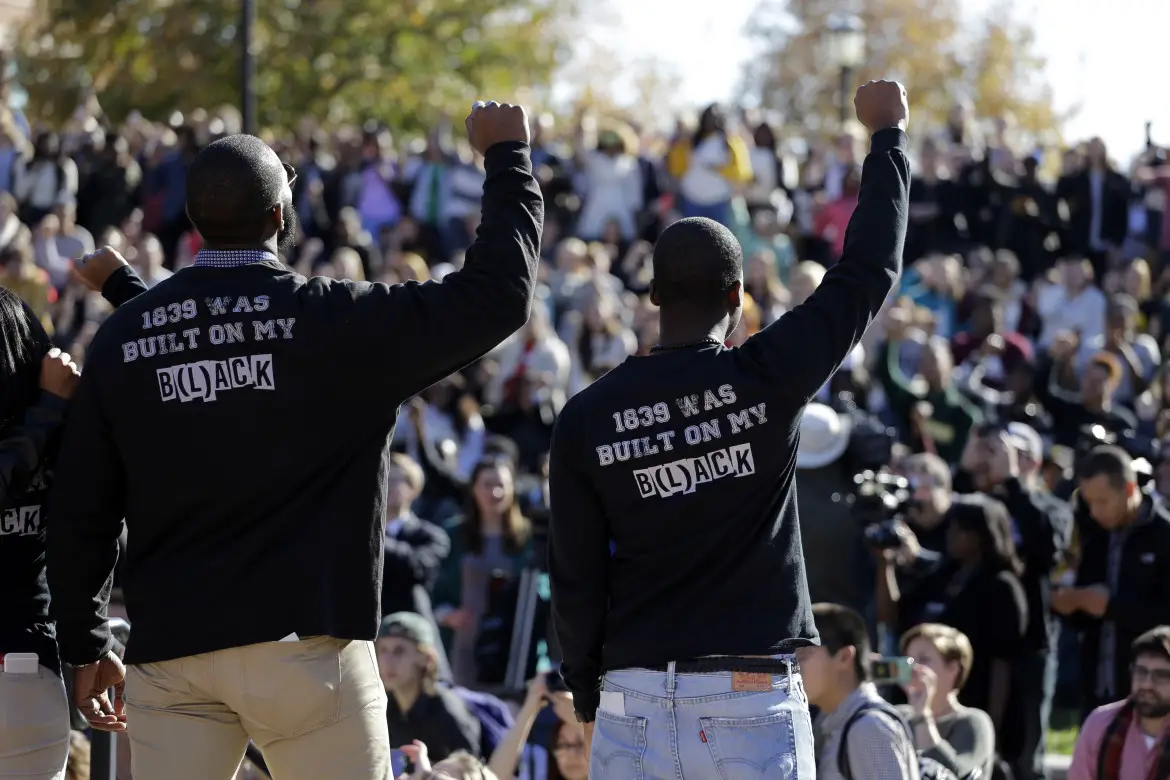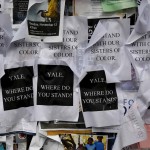When I was a senior in high school, I found myself seated one night at one of my best friend’s kitchen table talking about racism with her and her father.
We were in the middle of our college applications, buried in mountains of forms and supplemental essays and financial aid applications. We were complaining about how disappointing it was to check the box marked “White” in the Racial/Ethnic Background section of our applications and subsequently watch the list of scholarships we were eligible for go down.
I’d already overheard a few of my other classmates at school grumbling that Affirmative Action itself was a form of reverse discrimination, and I voiced this observation aloud. I understood what Affirmative Action was and why it had been instituted, but it seemed hard to believe that, over fifty years after desegregation, racism still existed.
My friend’s dad, as he was getting up to leave the room, shocked me by saying, almost as if it were an afterthought, “Racism will never really stop being an issue until people stop noticing one another’s skin color entirely, and in that sense, things like Affirmative Action are perpetuating racism as much as they’re trying to compensate for it.” He left the table without another word.
The recent events that have transpired at the University of Missouri (affectionately referred to as Mizzou by students and alums) made me remember that statement for the first time in years. They’re making a lot of people rethink their ideas about racism and race relations.
Unfortunately, things at Mizzou probably aren’t over, not by a long shot.
The series of events, which gained real momentum on Monday with the resignation of the University’s president and the announcement of a Chancellor’s intention to step down at the end of the year, has continued to escalate in tension, drawing nationwide attention to the state.
I’ll be the first to admit that I don’t read the news on a daily basis. And if you’re like me, and your attention to the news is spotty at best, the explosion of racial tension at Mizzou probably seemed like something out of left field to you, too.
Honestly, if someone had told me that a rash of racially based violence and protests were about to break out, I would’ve put my money on someplace in the Deep South, like Alabama or Mississippi. Missouri, being north of the Mason-Dixon Line, wouldn’t even have been a suspect.
How It Started
In September, the President of the Students Association at Mizzou, Payton Head, called attention to the racial climate on campus when he reported that a group of white men had directed racial slurs at him while he crossed campus.
Today, Head’s Facebook Wall is covered in posts affirming solidarity from students all over the country — including schools like Brown, the University of Nebraska, Harvard, the University of Southern California and the University of Florida.
Several weeks later, in October, a similar verbal attack was launched at the Legion of Black Collegians as they were preparing for a homecoming event on campus. During the homecoming parade, a group of students attempted to confront UM’s President, Tim Wolfe, as he made his way through the procession in a car. Wolfe ignored the students.
Several days later, a swastika drawn in human feces was found drawn on the wall of one of the residence halls. (This was the second swastika found on campus this year; the first appeared in April.) Frustrated by the University’s inaction, a group of students spearheaded by the organization Concerned Student 1950 called for Wolfe to abdicate (or be removed from) his post as President.
If the events had been punctuated by slightly longer intervals of time, if they had been considered separate incidents rather than as parts of a whole, if Columbia were maybe a little further away from Ferguson, Missouri — it’s possible that none of these stories would have made it past the local news.
But coming so closely on the heels of Michael Brown’s shooting, which is widely considered by blacks and whites alike to be a blatant manifestation of systematic oppression, the relatively nonviolent racist events at the University of Missouri hit a nerve.
How It Grew
Jonathan Butler, a graduate student at UM and a member of the group protesting Wolfe’s inaction, took the next bold step and began a hunger strike. (Activist Level: Gandhi.) Shortly afterward, the members of the UM football team announced their intention to boycott both practices and games unless Wolfe was removed from his post.
While not as extreme as Butler’s hunger strike, the athletes’ threat to cease football activity hit the school where it really hurt.
Mizzou is a member of the SEC and missing a game could have had monstrous financial repercussions for the school on top of drawing even more bad publicity.
Meanwhile, protesters erected a tent encampment on campus (whether they did so for safety reasons or as a symbolic gesture is unclear), many teachers announced the cancellation of classes, and more and more voices joined those of Concerned Student 1950 in demanding Tim Wolfe’s resignation.
From Here…?
Tim Wolfe announced his resignation on Monday, accompanied by Chancellor Loftin, who indicated that he would renounce his position in favor of a less political role at the end of the year. While this news was greeted with cheers of triumph from many (not to mention a very hungry Jonathan Butler), protestors made it clear that they were not entirely placated and continued to advocate for larger systematic changes and awareness.
And the charged climate on campus only continued to escalate—since Wolfe’s resignation, police have made at least one arrest of the author of a terrorist threat. Several threats of shootings in the UM area were uncovered on YikYak, some of them frighteningly reminiscent of the 4chan post that preceded the shooting at Umpqua Community College not long ago.
As the University scrambled to find an interim president (who is, unsurprisingly, black), African American students began to report feeling unsafe.
Rumors flew: people driving around in unmarked pickup trucks harassing black students, Ku Klux Klan sightings, white power threats to passing black students.
And though the University has yet to declare a lockdown or a dangerous situation of any kind, many students (especially African American ones) have taken matters into their own hands and evacuated the campus.
The ever sensitive and compassionate Donald Trump, meanwhile, was quoted on multiple news platforms as calling the protests at UM “disgusting” and referring to the protestors as engaging in “infantile behavior.” Charming, Mr. Trump.
Here’s the thing about racism: if you’re not black, or not the target of the supposed racism in question, you don’t get to decide whether that racism is real or not.
Louis C.K. (from whom we can all probably take a few behavioral lessons) aptly summed up this moral imperative when he said, “When a person tells you that you hurt them, you don’t get to decide that you didn’t.” You might think that person (or group) is overreacting, or approaching the situation in the wrong way, and that’s fine — but you don’t get the privilege of negating something that they feel.
It’s tantamount to, say, men denying that sexism still exists. If a man walked up to me and told me that women aren’t sexually objectified and marginalized, that sexism was all in my head, I’d punch him in the face — first, for being an ignorant jerk, second, for presuming to be able to dictate my experience or know whether my perception of reality is true or false. Similarly, if I, as a white person, were to walk up to a black person and tell him/her that racism was all in his/her head, I would deserve to get punched.









